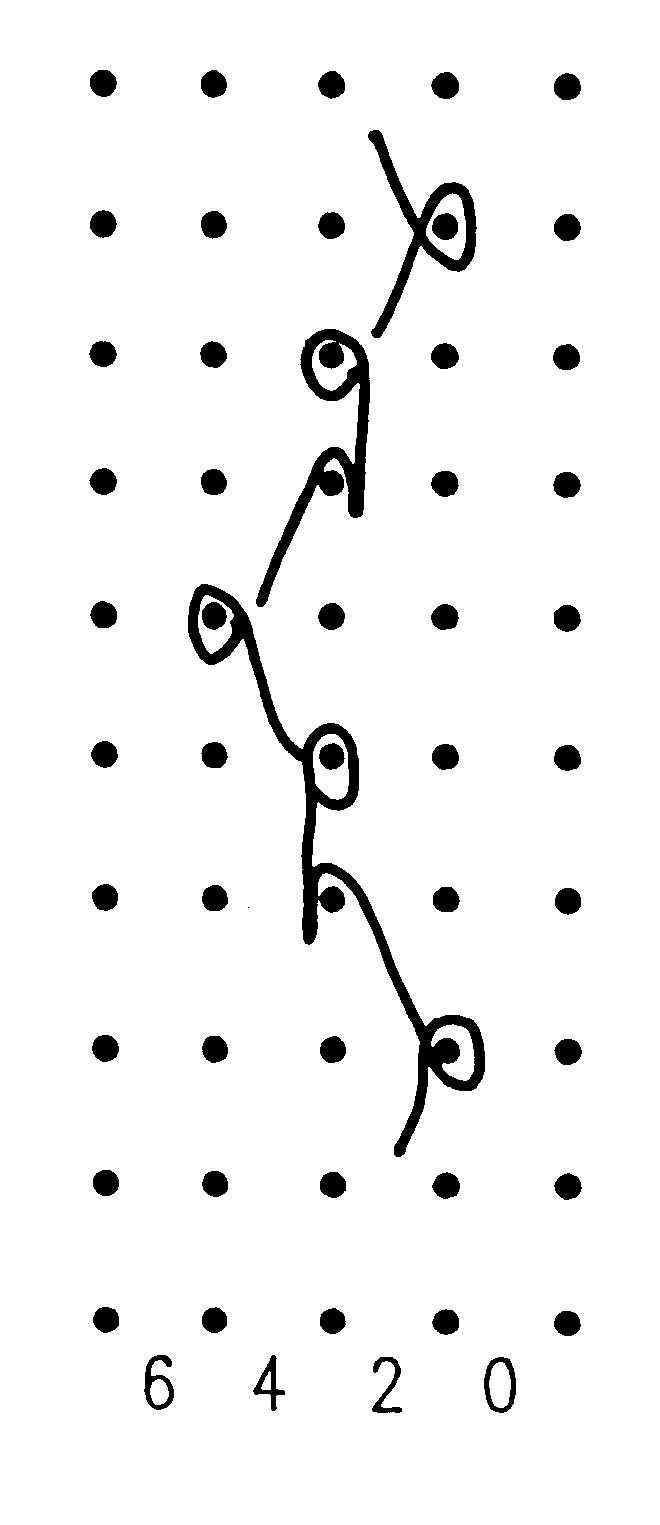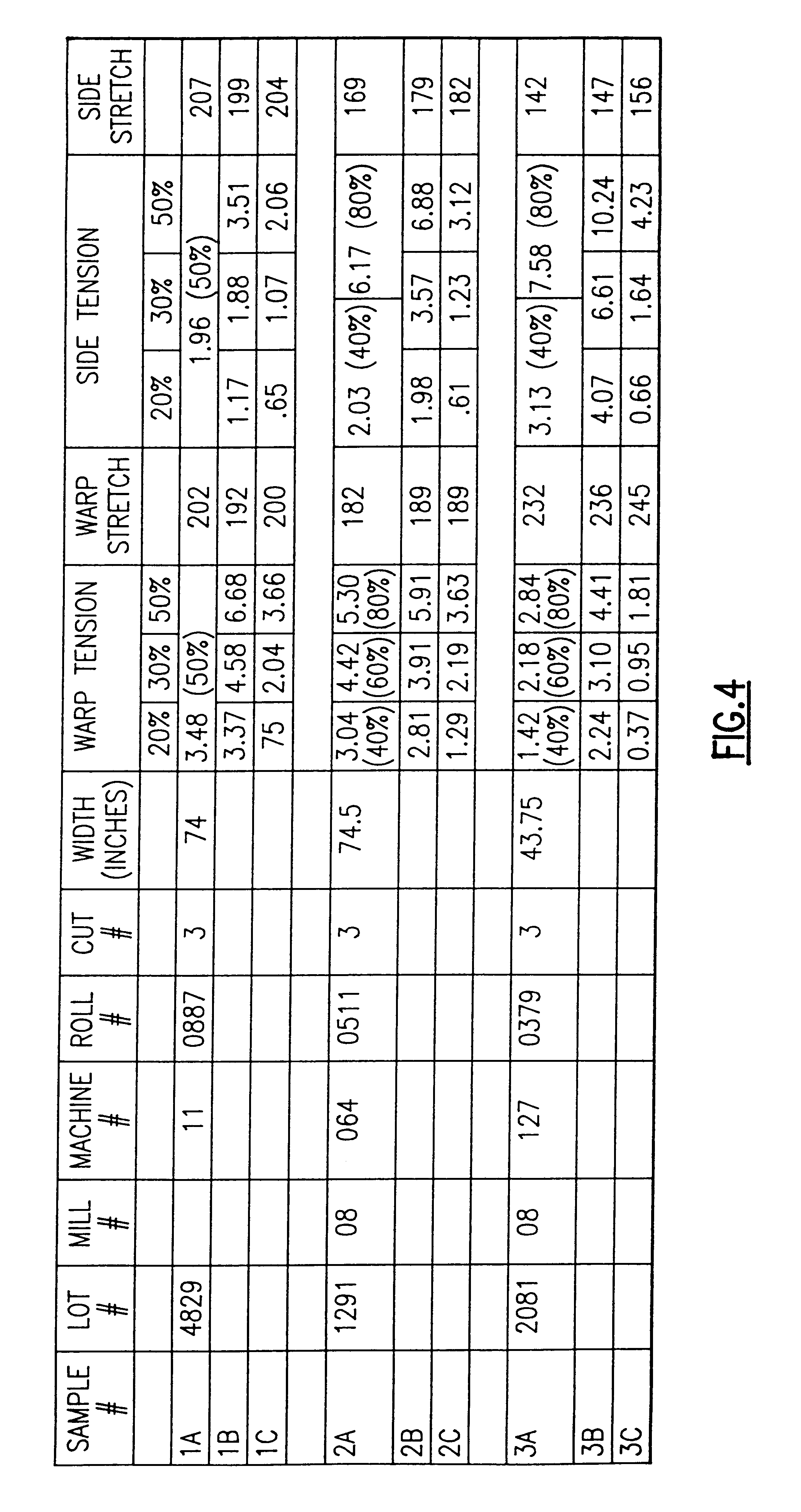Fabric having improved elasticity, modules and breathability, and garment made thereof
a technology of fabric and elasticity, which is applied in the direction of weaving, knitting, contraceptive devices, etc., can solve the problems of increasing the weight of the total garment, increasing the body heat retained by the fabric, and unable to achieve a kind of balanced two-way power stretch
- Summary
- Abstract
- Description
- Claims
- Application Information
AI Technical Summary
Problems solved by technology
Method used
Image
Examples
example 1
Fabric style number 96175. The fabric was knitted from:
68% 50 / 34 T929 Cat Dye CoolMax.TM. polyester
8% 140 T127 Dull Lycra.RTM.
24% 280 T127 Dull Lycra.RTM.
CoolMax.TM. is a cationic dyeable, polyester yarn that is spun in a dog bone cross section which provides channels to permit moisture movement along the fibers. The fabric had a warp stretch of 220%.+-.10% and a width stretch of 220.+-.10%. Both stretch measurements were taken under a load of 30 pounds using a Zwick apparatus, as is known and available in the art. The modulus in the warp direction was 50% 3.25.+-..33, and in the width direction was 50% 1.45.+-.0.15. The fabric weight was 8.95 ounces per square yard (osy). The fabric was cut, edge seamed and stitched into several possible garment styles using a closure made of hook and eye, Velcro.TM. type hook and loop, zipper, etc., depending on the garment style.
example 2
Style 96175, Dyelot #-0393. The fabric was knitted from:
68% 50 denier CoolMax.TM. polyester
8% 140 denier T127 Dull Lycra.RTM.
24% 280 denier T127 Dull Lycra.RTM.
The fabric had a warp stretch of 210.+-.10% and a width stretch of 226.+-.10%, both measurements taken under a load of 30 pounds using a Zwick apparatus. The modulus range was 1-4 at 50% stretch with 200 warp / 210 width stretch at 30 lbs. on a Zwick machine. The weight was 8.95 oz / yd2. The fabric was cut, edge seamed and stitched into a number of possible garment styles using a closure made of hook and eye, Velcro.RTM., zipper, etc., depending on the garment style.
example 3
Style 2175
The yarn construction is 8% 140 denier T127 Lycra.RTM., 23% 280 denier T127 Lycra.RTM., and 69% 50 denier nylon. The modulus range was 2-4 at 60 / 30% stretch with 200 warp / 200 width stretch at 30 lbs. on a Zwick machine. The weight was 8.40 oz / yd.
PUM
| Property | Measurement | Unit |
|---|---|---|
| skin surface temperature | aaaaa | aaaaa |
| pressures | aaaaa | aaaaa |
| pressures | aaaaa | aaaaa |
Abstract
Description
Claims
Application Information
 Login to View More
Login to View More - R&D
- Intellectual Property
- Life Sciences
- Materials
- Tech Scout
- Unparalleled Data Quality
- Higher Quality Content
- 60% Fewer Hallucinations
Browse by: Latest US Patents, China's latest patents, Technical Efficacy Thesaurus, Application Domain, Technology Topic, Popular Technical Reports.
© 2025 PatSnap. All rights reserved.Legal|Privacy policy|Modern Slavery Act Transparency Statement|Sitemap|About US| Contact US: help@patsnap.com



